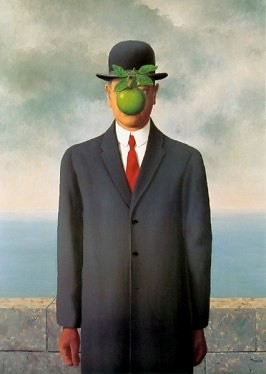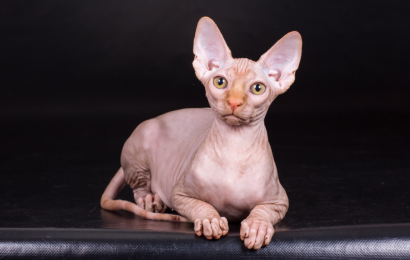
René Magritte; An Apple for a Face (2 – Artist, Weirdo or Genius?)
Welcome to the second Latvian and English blog of ‘’Artist, Weirdo or Genius?’’. If you’ve read our blog about Louis Wain, you know the drill. Our upcoming blogs will be in Latvian.
Hi! We’re Patrīcija and Dora from 9. soc class. We’re aspiring artists looking forward to studying artists, specifically painters, who defined abnormality in modern society. One pattern that can be suspected in our selection of artists is mental trauma and health. The reason for this odd variety of our chosen artists is that we want to inform other people about how mental illness is not necessarily a threat and how it is much often stigmatized. Our message that we want to spread is that you can still function and create masterpieces whilst being troubled and how it’s not a bad thing.
Have you ever met a person and thought ‘’wow, they’re so weird! I never want to be like them!’’ to yourself? ‘’They create so much… weird stuff.’’. You might perceive ‘weirdness’ as a bad thing, but we think otherwise. Introducing René Magritte…
René François Ghislain Magritte was a surrealist born in 1898 in Lessines, Belgium. His father was a tailor and his mother was a milliner (made and sell women’s hats). René grew up surrounded by art; his uncle was an artist who taught him to draw and paint, while his grandfather collected paintings by famous artists such as Van Gogh.
Magritte’s early career consisted mostly of painting landscapes and portraits for locals. He also worked as an illustrator for a Belgian newspaper called La Patrie (The Country), where he drew caricatures of celebrities and icons such as Charlie Chaplin and Albert Einstein.
Surrealism is a movement that began in the early 20th century, and it’s commonly recognized by dream-like imagery, distortion of reality. As we both like to call it; ‘Real things in unreal circumstances’.
Magritte was heavily influenced by surrealism; he joined the movement in 1929 when he was 23 years old. His work was so closely linked with the movement that he often painted over his own paintings to make them look more like those produced by other surrealists like Max Ernst or Rene Crevel.
In 1926, Magritte had his first solo exhibition at the Galerie Le Centaure in Brussels. The show was a success, and he received critical acclaim for his work. In 1930s Belgium, surrealism was gaining popularity among artists; however, it wasn’t until 1936 that Magritte really began exploring this style of art in earnest with works such as The Treachery of Images or Ceci n’est pas une pipe (“this is not a pipe” in French).
One of the most popular works of Magritte is his self-portrait ‘Son of Man’ (featured image). Fellow critics have interpreted this masterpiece in a handful of ways, from the man being Jesus Christ and the apple being the forbidden apple Eve bit into to the loss of identity of oneself.
Rene Magritte’s style and techniques are unique and recognizable. He used symbolism to convey meaning, which can be seen in his paintings. Using symbolism, Magritte also painted with oil on canvas or wood panels for most of his career; he experimented with other media such as gouache later in life.
Magritte’s personal life was quite chaotic. He married Georgette Berger in 1929 and they had a son in 1931. They divorced five years later due to infidelity on both sides. In 1936 he married his second wife. The couple had three children. Magritte also had an affair with poet Jacqueline Lamba. However, this relationship ended when Lamba left Belgium for Paris after the German occupation began during World War II.
In addition to his relationships with women and children, Magritte also struggled with mental health issues throughout his life. His first breakdown occurred when he was 18 years old due in part from overworking himself at school; however, it wasn’t until 1944 when he experienced another episode while working as an artist during World War II which resulted in him being hospitalized for several weeks before returning home safe but shaken up by what happened during those few days away from home.
Magritte was diagnosed with pancreatic cancer in 1967 and died shortly after.
We both are fans of Magritte and were ecstatic when we recently had an arts class relating to surrealism where Magritte was one of the main artists named. This specific subject inspired us to write about him and his amazing works.
Source(s)
Kimmelman, M. (1992, September 11). Review/Art; Magritte And His Defiance Of Life. Retrieved March 31, 2023, from https://www.nytimes.com/1992/09/11/arts/review-art-magritte-and-his-defiance-of-life.html?gwh=FE4149A4BEDE736BAD89D6AA6A87F13C




